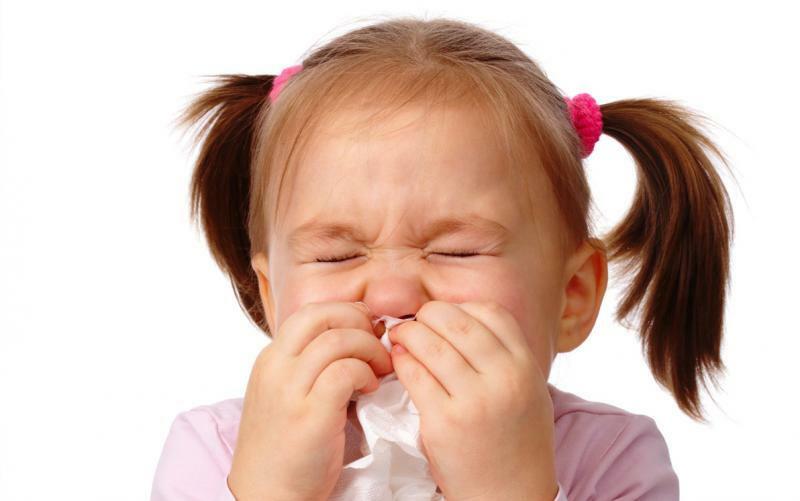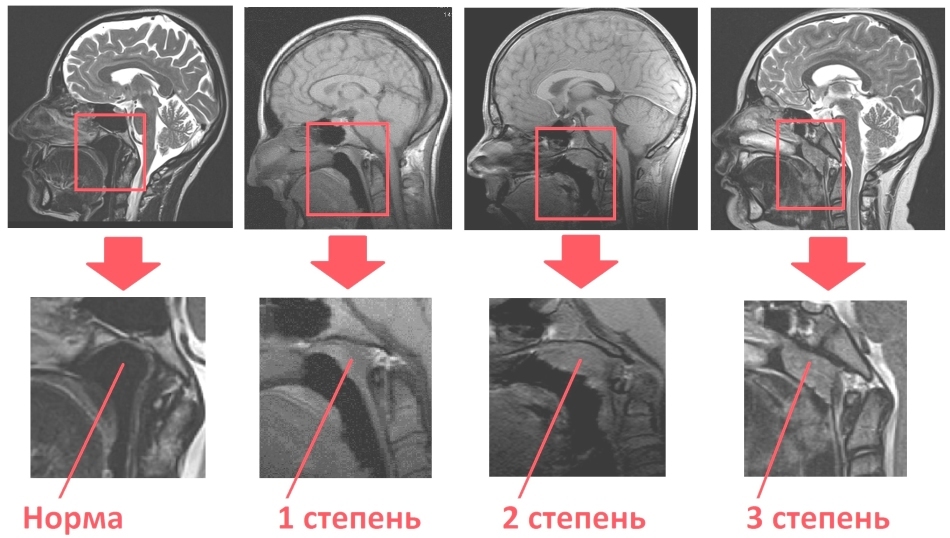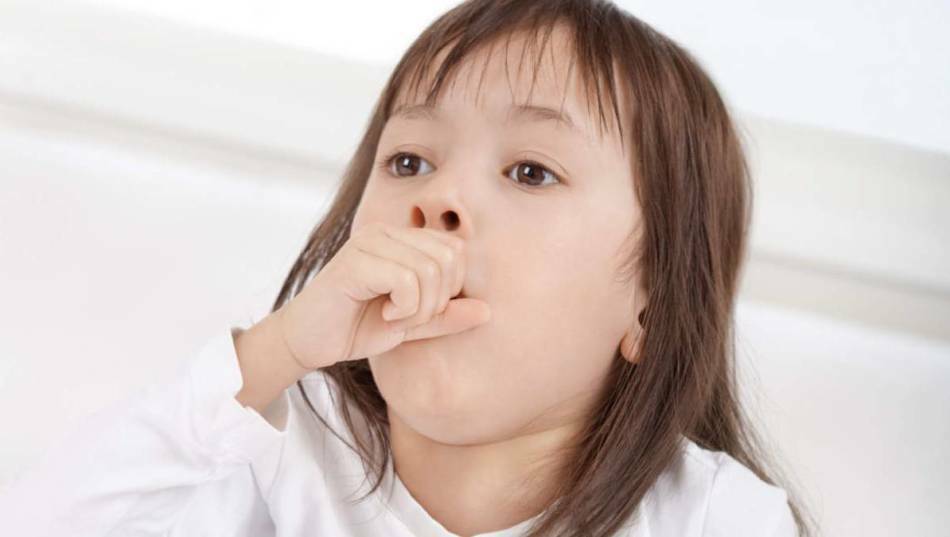From the article you will learn why children develop adenoids and how to deal with this problem.
Contents of
- Where are the adenoids in the nose and glands in the throat located and how do they look?
- Signs and symptoms of adenoids in children
- Causes of adenoids in children
- Degrees of adenoids in children. Photo of degrees of adenoids
- Edema in adenoids in a child
- How to treat nasal congestion, cough, runny nose in adenoids in children?
- Than to treat adenoids at the child without operation?
- What are the drops used for adenoids in children?
- At what age do adenoids in children are removed?
- Adenoids in a child: advice and feedback
- Video: Adenoids - Dr. Komarovsky's school
If your baby is often sick and long for a snot, this may be a sign that your baby has had nasopharyngeal tonsils. Most often parents learn about the disease, when the adenoids in children increase to such a size that the baby becomes difficult to breathe.
But the most obvious sign of the disease is always a half-open mouth. If your child has two of these symptoms, then it is better to show your doctor, because only he can correctly determine what is happening with your child and what treatment should be used.
Where are the adenoids in the nose and the glands in the throat located and how do they look?
Adenoids and glands are simply a lymphatic tissue, which acts as a barrier against diseases transmitted by airborne droplets. In a healthy state, these formations have a rounded shape and a pale pink color. But if the defenses decrease and the infection gets into the body, they become purple, and grow very large in size.
These vital formations are arranged in the form of a ring in the oropharynx. They perform one and the same protective function, all that distinguishes them is their location. Glands located in the throat, and adenoids - in the upper part of the pharynx.
Symptoms and symptoms of adenoids in children
 Although tonsillar enlargement is a fairly common disease, its treatment should be approached seriously enough. After all, if you do not tackle this problem in time, the child may begin, for example, chronic sinusitis or tonsillitis. And these two diseases as you know deliver a lot of unpleasant sensations.
Although tonsillar enlargement is a fairly common disease, its treatment should be approached seriously enough. After all, if you do not tackle this problem in time, the child may begin, for example, chronic sinusitis or tonsillitis. And these two diseases as you know deliver a lot of unpleasant sensations.
Symptoms of the enlargement of the tonsils:
• The child has difficulty breathing
• Chronic cold
• Severe snoring in the dream
• Harsh voice
• The child is very often sick
• Reduced appetite
• Incorrect bite
Reasons for adenoids in children
Every mother tries to keep her babygrew up healthy and strong. She does everything for her son or daughter to get sick less often and meet with doctors, but there are diseases that manifest themselves no matter what way of life the child leads.
Factors that can affect the growth of tonsils in the nose:
• Heredity .If the father or mother in childhood had problems with adenoids, then it is likely that the same problems will occur in the child
• Severe pregnancy. An increase in tonsils can trigger viral diseases suffered in the first trimester, regular intake of medicines and birth injuries
• Feeding. The growth of adenoids can result in an unbalanced meal, a large amount of sweet foods, and products that contain artificial fillers and preservatives.
Adenoids in children. Photo of degrees of adenoids

Degrees of growth of tonsils:
• First( small size).The child may have minor respiratory disturbances in sleep
• The second( medium size).The baby can hardly breathe through his nose, and in a dream he snores very
• The third( large size).In a dream breathes exclusively through the mouth and is very often sick
Edema in adenoids in a child
If you notice that your baby has a heavily stuffy nose and constantly smears, sneezes and breathes heavily, it means that the enlarged tonsils provoked swelling of the nose. But no matter how badly the son feels himself to be upset, it is not worth it. These symptoms can be cleaned at home.
Methods for swelling:
• Non-medical methods. Increase humidity in the apartment, inhalation, let's drink as much liquid and make warming compresses
• Medications. Will help alleviate the symptoms of ordinary nasal drops, antihistamines or special substances of systemic action
• Folk methods. Nose can be washed with mother-and-stepmother, plantain, calendula or instilled with beets, scarlet and carrot juice with olive oil.
How to treat nasal congestion, cough, runny nose in adenoids in children?
 If the adenoids in children reach a large size, then usually they begin to provoke a cough and runny nose. Most often these two symptoms are greatly aggravated during the period of the child's sleep.
If the adenoids in children reach a large size, then usually they begin to provoke a cough and runny nose. Most often these two symptoms are greatly aggravated during the period of the child's sleep.
This is due to the fact that receptors that are located in the nasopharynx are constantly irritated by enlarged adenoids and mucus that is located on the back of the nose and throat.
The following recommendations will help you get rid of these problems:
• We cough. You can dissolve tablets that increase immunity, rinse throat with saline, take vitamin C and antitussives
• Treat colds .The nose should be washed with sea salt, sprinkled with glucocorticosteroids, instilled with drops, which contain antiseptics and antibiotics and take antihistamines.
. Than to treat adenoids in a child without surgery?

And if you also belong to this category, then try to ease the state of the child with folk remedies. But still know if the amygdala in the nose is very hypertrophied, then you will all have to contact the doctors
Methods of treatment of adenoids at home
• Prepare home drops. Take a dry clove( 8- 12 pcs.), Pour a glass of water, close the lid and leave to infuse. When the liquid darkens it must be filtered through several layers of gauze, pour into a clean bottle and using a pipette to dig in the nose. Such drops you can safely enjoy a long time
• We make a soda wash .Dissolve in a glass of warm boiled water a fourth of a teaspoon of soda and add to the resulting solution 10 drops of alcohol. Rinse your nose at least 3 times a day, pouring in one nostril half a cup at a time. For each rinse it is necessary to prepare a fresh solution of
What are the drops used for adenoids in children?
Most often, enlarged lymphatic structures provoke severe rhinitis. This disease is treated very simply, ordinary drops for the nose. The main thing, remember, that drops for the baby should be selected especially carefully. It will be better if they are prepared from natural, soft-acting components.
Types of nasal drops:
• Drops from a pharmacy. Regardless of how much the chosen drug will cost, it should have anti-inflammatory and antibacterial properties. Not bad cope with rhinitis Nazoneks and Polydex
• Home drops. Each mother can easily prepare a remedy at home. Very well cleans the nasal sinuses Kalanchoe. It is necessary to take a leaf, wash it well under water, dry it a little and squeeze out the juice from it. Bury the liquid by 4 drops in one nostril
• Homeopathic drops. Such drugs effectively kill harmful bacteria, moisturize the nasal cavity and do not provoke side effects
At what age do adenoids in children are removed?
 It is believed that removing adenoids to very young children does not make sense, because there is a possibility that by the age of seven they will grow again. But still this opinion is not entirely correct. There are cases when it is necessary to remove lymphatic formations even to three-year-old children.
It is believed that removing adenoids to very young children does not make sense, because there is a possibility that by the age of seven they will grow again. But still this opinion is not entirely correct. There are cases when it is necessary to remove lymphatic formations even to three-year-old children.
Indications for removal:
• Conservative treatment of
did not help • The child does not breathe at all with
nose • Stopping breathing during sleep
• Bite and posture violation
• Frequent otitis
Adenoids in the child: advice and feedback
Valentine : II was very afraid when the doctor said that my son needed an operation to remove it. But all the glory of God was successful. The adenoids were removed fairly quickly and, most importantly, without complications. After that, the son quickly recovered and practically ceased to hurt. So I was satisfied with the result.
Tamara : We have some adenoids that do not grow much, so we decided to try the old grandmother's methods. We wash our nose with sea salt, drip the aloe nose and just boost the immunity with a lot of vegetables and fruits. While everything seems to be all right.
